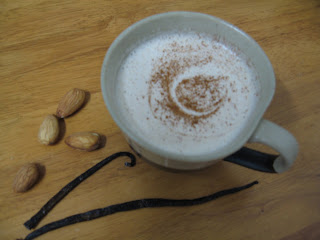Near the end of December I was talking with a doctor at the university hospital where I have done the majority of my testing to find my problem (for the past 2 1/2 years). The doctor I was speaking with was a listener - wow! - and I had met him a few times before. In fact, he made a very astute statement a couple years ago that was filled with truth, "With all your problems [heart, lungs, neck, neural, bone, female, muscle, etc] you really need all your treating doctors to get together to discuss what the problem is ... but you know that will never happen." So, in the course of our conversation I told the doctor the problem was systemic candida. He looked surprised and said, "Really? That is very rare." [Hmmm, from what I'm reading on the internet, diseases - especially autoimmune diseases - stem from bacterial invasions of the body, and those bacteria are linked to 'candida'. Hmmm, so maybe not as rare as is taught in medical dialogue!]
I just gave him a snippet about where I think the main problem lies - the esophagus in the mid-neck area - and supported it with diagnostic testing: For months I had gone to the ENTs with severe throat and later mouth problems, and on record are picts of the deep throat taken by a scope. The picts consistently show a foamy cottage cheese-like unknownness, and when I eat the wrong food, it would be larger and thicker and I would constantly be spitting up phlegm, and when I went on solid vegies for several days before returning for re-analysis, it had been greatly reduced. He listened and seemed to quite agree with what I said. And then he said, "Well, getting a bacterial test is very easy, but if the problem is viral, well, viruses just are hard to test for and pick up evidence about. But bacteria, easy!" Shocked that someone told me about such an easy test when I had mentioned to 3 doctors [ENT, gynecologist, and my dentist] that I thought the problem was candida (not
candida albicans) when they all had poo-poohed the suggestion. So, I asked for the blood test.
The blood test was composed of aerobic and anaerobic blood samples, 10cc of blood for each. After 5 days of being in the lab, the outcome was ... nothing. All the wild symptoms (except 9 days of arm convulsions and a low-grade fever with slight dizziness a couple months after onset) fit perfectly to equate to systemic candida. Even my food sensitivities pointed to that, for example, when I had food reactions I would hit the internet with "tomatoes and candida" or "citric acid and candida" and sure enough, people with candida should NOT eat those items. So I was shocked that I still had no diagnosis!
Finally I went on-line and researched about blood readings for candida. The only thing I found that could relate is that when the blood registers bacteria overgrowth in it, then the body is seriously compromised and the bacteria is spreading throughout. Well, that seems to make sense. I have been on a strict systemic candida diet for 13 months and the symptoms are virtually gone .... AS LONG AS I STAY ON THE STRICTEST OF DIETS (perhaps a strawberry or a slice of apple, but that's rare). I've read in other places that candida is a shape-changer -- it's both bacteria and mold/fungus and can successfully "hide" from detection. Sigh ... whatever it is, it's very successfully hiding from the highly esteemed medical world.
Anyway, I'm still not 100% sure the problem is systemic candida, BUT I can say that the diet I am on is (1) almost completely controlling the symptoms, (2) has virtually eliminated the pain and inflammation, and (3) gives me loads of energy, bright eyes, and very healthy skin. When the nurse called me to tell me the test outcome, her dismissing statement really irritated me, "The test came back negative. You don't have candida, so don't worry about it anymore." Ooooh, I fight for every day of health in my kitchen, never eating out because restaurant food causes pain and return of symptoms, and she says "Don't worry about it anymore." I'm going to keep stating to everyone, "The prob is systemic candida" because NO ONE has ever found any answers but I have found one huge solution, THE SYSTEMIC CANDIDA DIET!!!


























